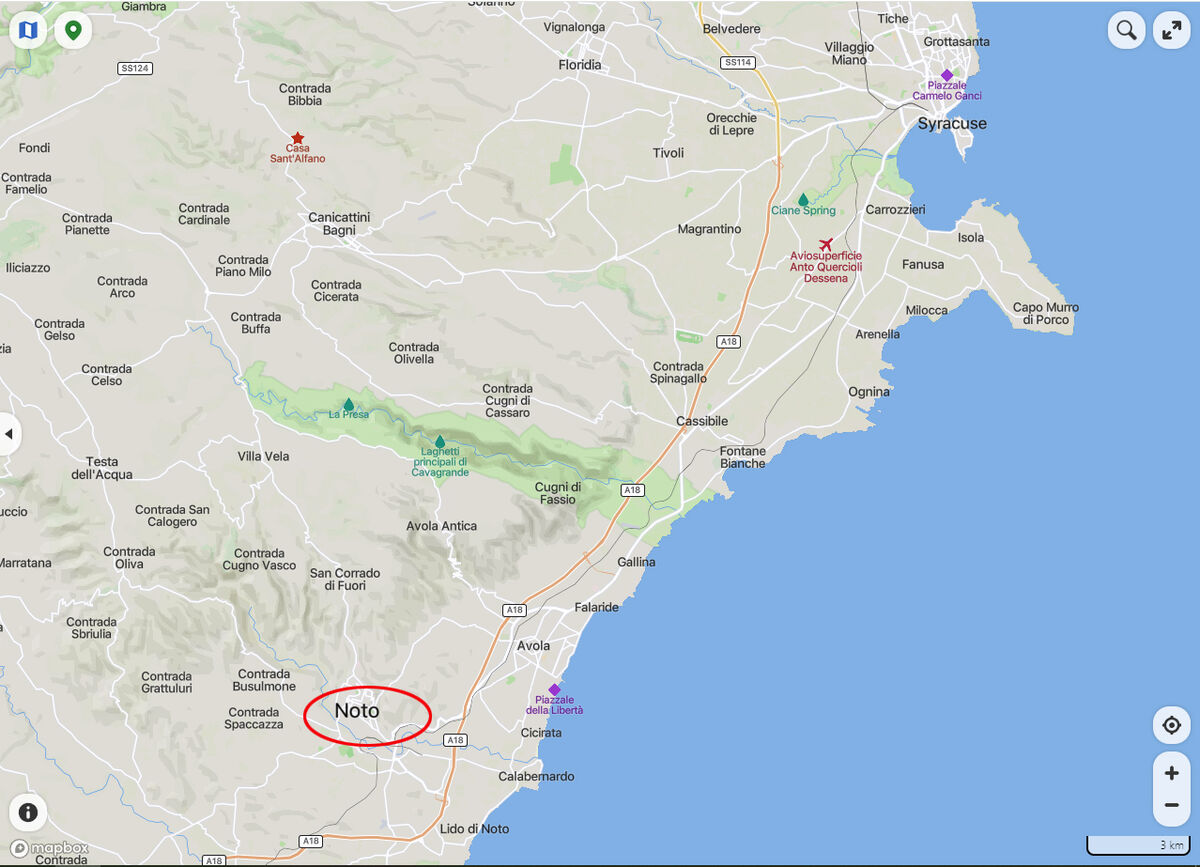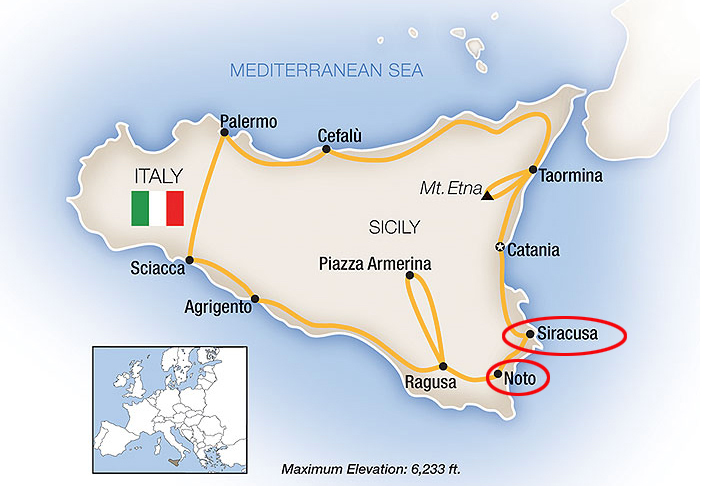Sicily: Noto Part 1
Mar 22, 2024 14:08:49 #
After leaving the bus we took a quick walk through the market (subject of a future post) to meet our guide in front of the Porta Reale di Noto, or the ‘Royal Gate of Noto’. The emblem of Noto, it was built in honor of the arrival of King Ferdinand II of Bourbon, known as the king of the two Sicilies, The designer of the triumphal arch also built the statue and war memorial of Ferdinand. It was built and completed in 1838 maintains its original appearance.
Noto (Sicilian: Notu; Latin: Netum) is a city and comune in the Province of Syracuse, Sicily, Italy. It is 32 kilometres (20 mi) southwest of the city of Syracuse at the foot of the Iblean Mountains. It lends its name to the surrounding area Val di Noto. In 2002 Noto and its church were declared a UNESCO World Heritage Site.
Etymology
Noto is regarded as having a possible Ancient Greek etymology. Likely, the name is derived from "south" (Greek: Νότιο Πήλιο), as in Notion and Notio Aigaio.
History
The old town, Noto Antica, lies 8 kilometres (5 mi) directly north on Mount Alveria. A city of Sicel origin, it was known as Netum in ancient times. In 263 BCE the city was granted to Hiero II by the Romans. According to legend, Daedalus stayed in the city after his flight over the Ionian Sea, as did Hercules after his seventh task. During the Roman era, it opposed the magistrate Verres.
In 866 it was conquered by the Muslims, who elevated the city to become a capital of one of the three districts of the island (the Val di Noto). In 1091, it became the last Islamic stronghold in Sicily to fall to the Christians. Later it became a rich Norman city.
In the 16th and 17th centuries, the city was home to several notable intellectual figures, including Giovanni Aurispa, jurists Andrea Barbazio and Antonio Corsetto, as well as architect Matteo Carnelivari and composer Mario Capuana. In 1503 King Ferdinand III granted it the title of civitas ingeniosa ("Ingenious City"). In the following centuries, the city expanded, growing beyond its medieval limits, and new buildings, churches and convents were built.
The medieval town of Noto was virtually razed by the 1693 Sicilian earthquake. Over half the population is said to have died from the earthquake. It was decided to rebuild the town at the present site, on the left bank of the River Asinaro, closer to the Ionian shore. These circumstances have led this town to have a unique architectural homogeneity since the core of the town was all built over the next decades after the calamity in what is a typical and highly preserved example of Sicilian baroque. The layout followed a grid system by Giovanni Battista Landolina and utilized the sloping hillside for scenographic effects. The architects Rosario Gagliardi, Francesco Sortino and others each participated in designing multiple structures. The town was dubbed the "Stone Garden" by Cesare Brandi and is currently listed among UNESCO's World Heritage Sites. Many of the newer structures are built of a soft tufa stone, which assumes a honey tonality under sunlight. Parts of the cathedral, however, unexpectedly collapsed in 1996.
The city, which had lost its provincial capital status in 1817, rebelled against the House of Bourbon on 16 May 1860, leaving its gates open to Giuseppe Garibaldi and his expedition. Five months later, on 21 October, a plebiscite sealed the annexation of Noto to Piedmont.
In 1844, Noto was named a diocese, but in 1866 suffered the abolition of the religious guilds, which had been deeply linked to the city's structures and buildings.
Noto was freed from the fascist dictatorship of Benito Mussolini in July 1943. The Notinesi people voted in favour of the monarchy in the referendum of 1946.
Noto is famous for its buildings from the early 18th century, many of which are considered to be among the finest examples of Sicilian baroque style. It is a place of many religious buildings and several palaces.
Archaeological sites
The remains of Noto's ancient structures are almost entirely hidden beneath the ruins of the mediaeval town, except for three chambers cut into the rock. One is noted by an inscription in the library at Noto to have belonged to a gymnasium, while the other two were heroa (shrines of heroes). Explorations have discovered four cemeteries dating to the third Sicel period and one from the Greek period. Among other finds are catacombs of the Christian period and several Byzantine tombs.
About 6 kilometres (4 mi) south of Noto, on the left bank of the Tellaro (Helorus) river, stands a stone column about 10 metres (33 ft) high, which is believed to be a memorial to the surrender of Nicias. In the 3rd century BC, a tomb was excavated in the rectangular area which surrounds it, destroying an apparently pre-existing tomb. Remnants of a later burial site belonging to the necropolis of the small town of Helorus, 750 metres (2,460 ft) to the southeast, have been discovered. The Villa Romana del Tellaro is a Roman villa located south of Noto.
Nature reserves
Two nature reserves can be found near Noto: the Riserva naturale orientata Cavagrande del Cassibile, established in 1990, and the Riserva naturale orientata Oasi Faunistica di Vendicari, established in 1984.
Culture
In the Noto neighbourhood, a 32-m radiotelescope was installed by the Istituto di Radioastronomia di Bologna as part of the Consiglio Nazionale delle Ricerche. It works in collaboration with a similar instrument in Medicina, Bologna.
The city has held an annual flower festival, the Infiorata, every May since the 1980s, lining the Corrado Nicolaci with floral mosaics.
One episode of the movie L'Avventura (1960) directed by Michelangelo Antonioni was shot in Noto and features views of its cathedral and square.
https://en.wikipedia.org/wiki/Noto
For images of the ride to Noto, please see my previous post:
https://www.uglyhedgehog.com/t-802612-1.html#14521681
I hope you enjoy these!
Mark
Noto (Sicilian: Notu; Latin: Netum) is a city and comune in the Province of Syracuse, Sicily, Italy. It is 32 kilometres (20 mi) southwest of the city of Syracuse at the foot of the Iblean Mountains. It lends its name to the surrounding area Val di Noto. In 2002 Noto and its church were declared a UNESCO World Heritage Site.
Etymology
Noto is regarded as having a possible Ancient Greek etymology. Likely, the name is derived from "south" (Greek: Νότιο Πήλιο), as in Notion and Notio Aigaio.
History
The old town, Noto Antica, lies 8 kilometres (5 mi) directly north on Mount Alveria. A city of Sicel origin, it was known as Netum in ancient times. In 263 BCE the city was granted to Hiero II by the Romans. According to legend, Daedalus stayed in the city after his flight over the Ionian Sea, as did Hercules after his seventh task. During the Roman era, it opposed the magistrate Verres.
In 866 it was conquered by the Muslims, who elevated the city to become a capital of one of the three districts of the island (the Val di Noto). In 1091, it became the last Islamic stronghold in Sicily to fall to the Christians. Later it became a rich Norman city.
In the 16th and 17th centuries, the city was home to several notable intellectual figures, including Giovanni Aurispa, jurists Andrea Barbazio and Antonio Corsetto, as well as architect Matteo Carnelivari and composer Mario Capuana. In 1503 King Ferdinand III granted it the title of civitas ingeniosa ("Ingenious City"). In the following centuries, the city expanded, growing beyond its medieval limits, and new buildings, churches and convents were built.
The medieval town of Noto was virtually razed by the 1693 Sicilian earthquake. Over half the population is said to have died from the earthquake. It was decided to rebuild the town at the present site, on the left bank of the River Asinaro, closer to the Ionian shore. These circumstances have led this town to have a unique architectural homogeneity since the core of the town was all built over the next decades after the calamity in what is a typical and highly preserved example of Sicilian baroque. The layout followed a grid system by Giovanni Battista Landolina and utilized the sloping hillside for scenographic effects. The architects Rosario Gagliardi, Francesco Sortino and others each participated in designing multiple structures. The town was dubbed the "Stone Garden" by Cesare Brandi and is currently listed among UNESCO's World Heritage Sites. Many of the newer structures are built of a soft tufa stone, which assumes a honey tonality under sunlight. Parts of the cathedral, however, unexpectedly collapsed in 1996.
The city, which had lost its provincial capital status in 1817, rebelled against the House of Bourbon on 16 May 1860, leaving its gates open to Giuseppe Garibaldi and his expedition. Five months later, on 21 October, a plebiscite sealed the annexation of Noto to Piedmont.
In 1844, Noto was named a diocese, but in 1866 suffered the abolition of the religious guilds, which had been deeply linked to the city's structures and buildings.
Noto was freed from the fascist dictatorship of Benito Mussolini in July 1943. The Notinesi people voted in favour of the monarchy in the referendum of 1946.
Noto is famous for its buildings from the early 18th century, many of which are considered to be among the finest examples of Sicilian baroque style. It is a place of many religious buildings and several palaces.
Archaeological sites
The remains of Noto's ancient structures are almost entirely hidden beneath the ruins of the mediaeval town, except for three chambers cut into the rock. One is noted by an inscription in the library at Noto to have belonged to a gymnasium, while the other two were heroa (shrines of heroes). Explorations have discovered four cemeteries dating to the third Sicel period and one from the Greek period. Among other finds are catacombs of the Christian period and several Byzantine tombs.
About 6 kilometres (4 mi) south of Noto, on the left bank of the Tellaro (Helorus) river, stands a stone column about 10 metres (33 ft) high, which is believed to be a memorial to the surrender of Nicias. In the 3rd century BC, a tomb was excavated in the rectangular area which surrounds it, destroying an apparently pre-existing tomb. Remnants of a later burial site belonging to the necropolis of the small town of Helorus, 750 metres (2,460 ft) to the southeast, have been discovered. The Villa Romana del Tellaro is a Roman villa located south of Noto.
Nature reserves
Two nature reserves can be found near Noto: the Riserva naturale orientata Cavagrande del Cassibile, established in 1990, and the Riserva naturale orientata Oasi Faunistica di Vendicari, established in 1984.
Culture
In the Noto neighbourhood, a 32-m radiotelescope was installed by the Istituto di Radioastronomia di Bologna as part of the Consiglio Nazionale delle Ricerche. It works in collaboration with a similar instrument in Medicina, Bologna.
The city has held an annual flower festival, the Infiorata, every May since the 1980s, lining the Corrado Nicolaci with floral mosaics.
One episode of the movie L'Avventura (1960) directed by Michelangelo Antonioni was shot in Noto and features views of its cathedral and square.
https://en.wikipedia.org/wiki/Noto
For images of the ride to Noto, please see my previous post:
https://www.uglyhedgehog.com/t-802612-1.html#14521681
I hope you enjoy these!
Mark
Gail is always more interested in the sights than the confections!
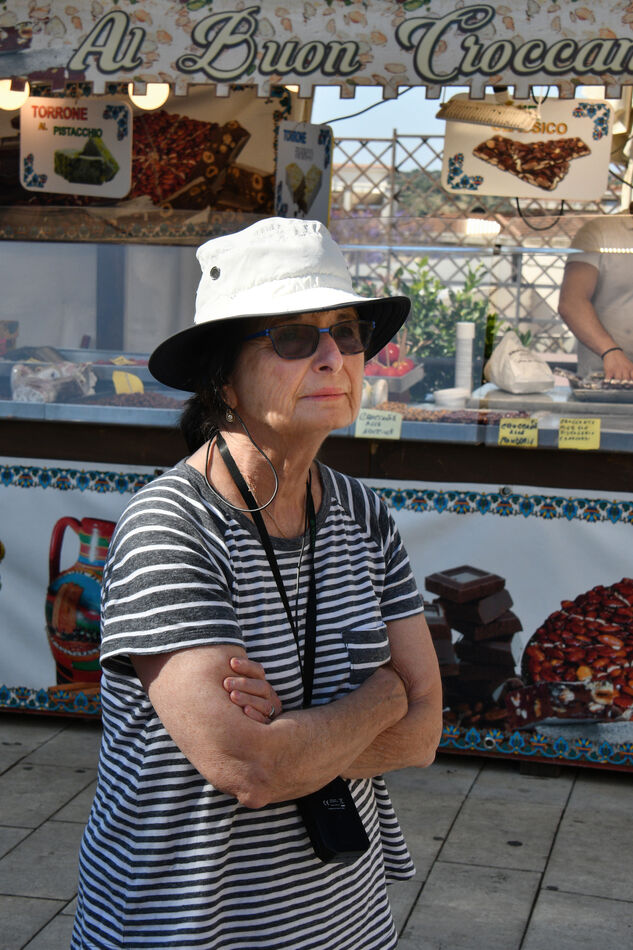
(Download)
Royal Gate (“Porta Reale”), a monumental entrance to the town in the shape of a triumphal arch erected in 1838 by Ferdinand of Bourbon
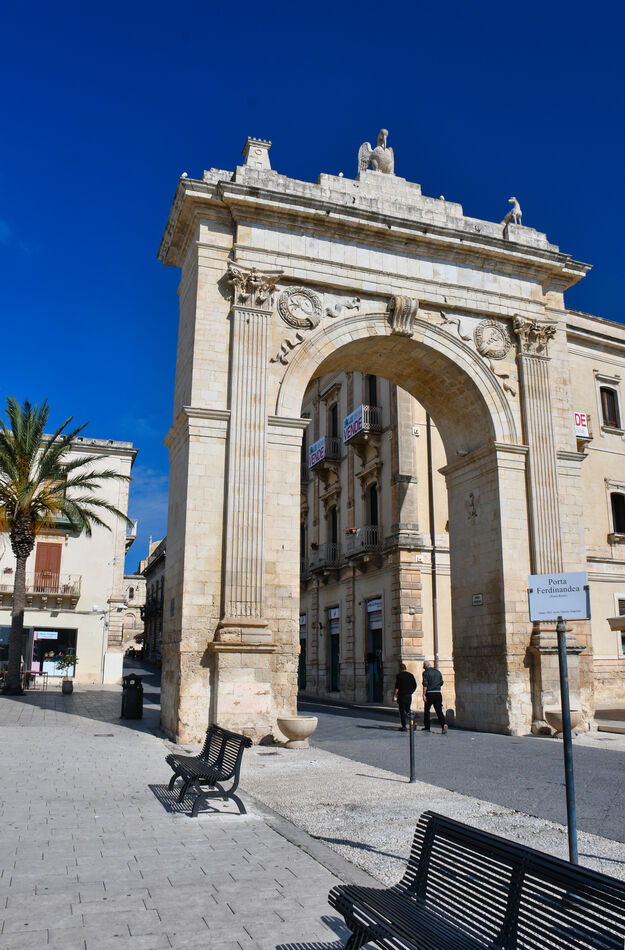
(Download)
Some of the local fellas in animated conversation - guess who's speaking.
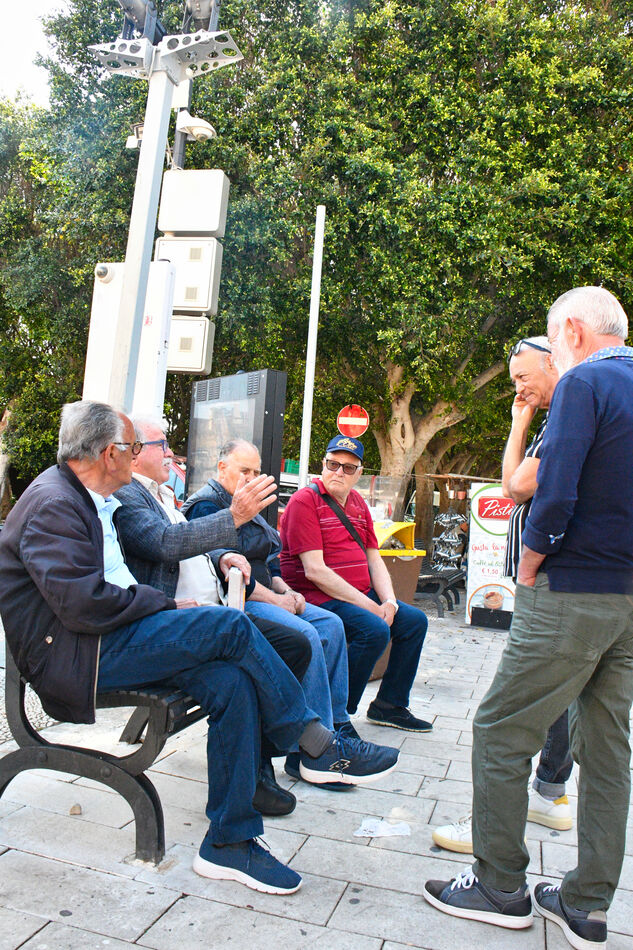
(Download)
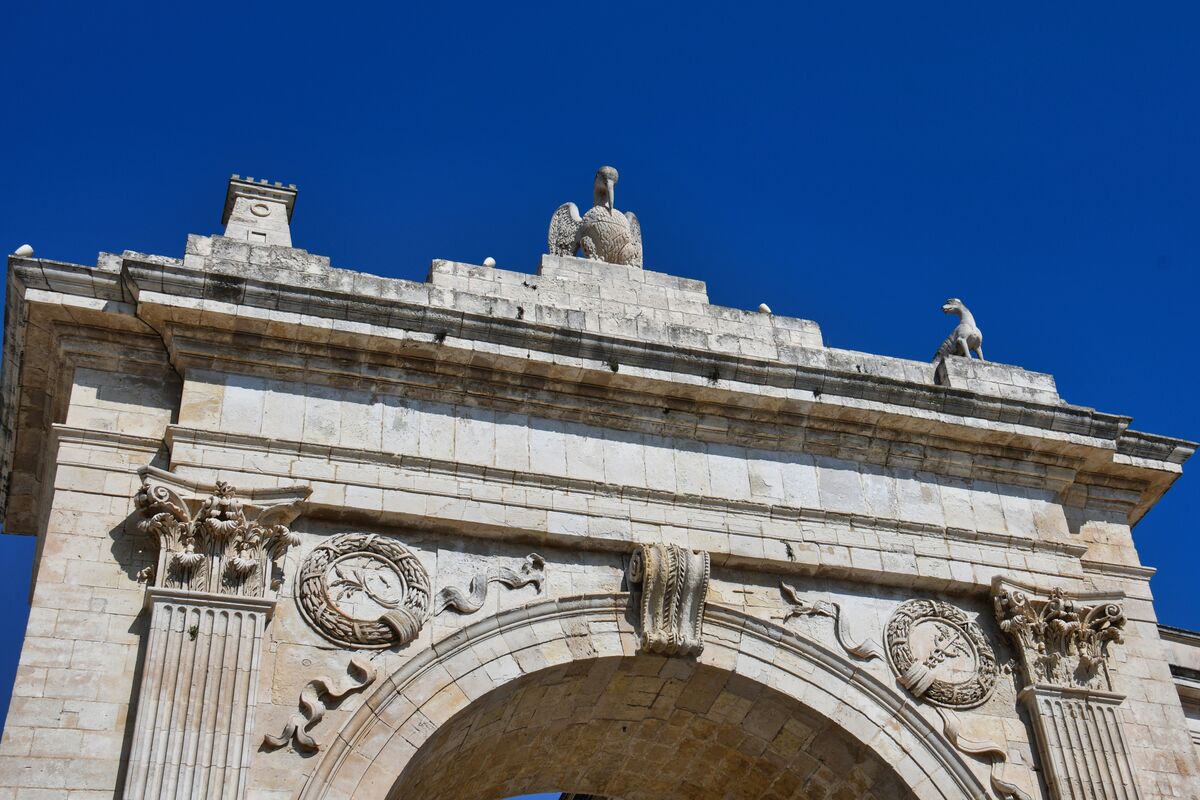
(Download)
Our local guide
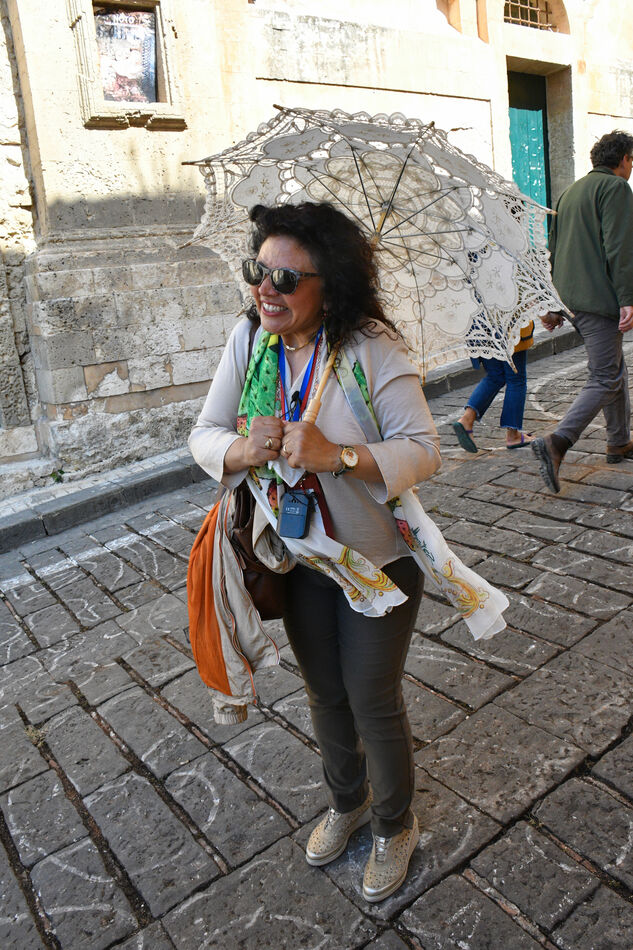
(Download)
The main route through the historical heart of Noto is the Corso Vittorio Emanuele.
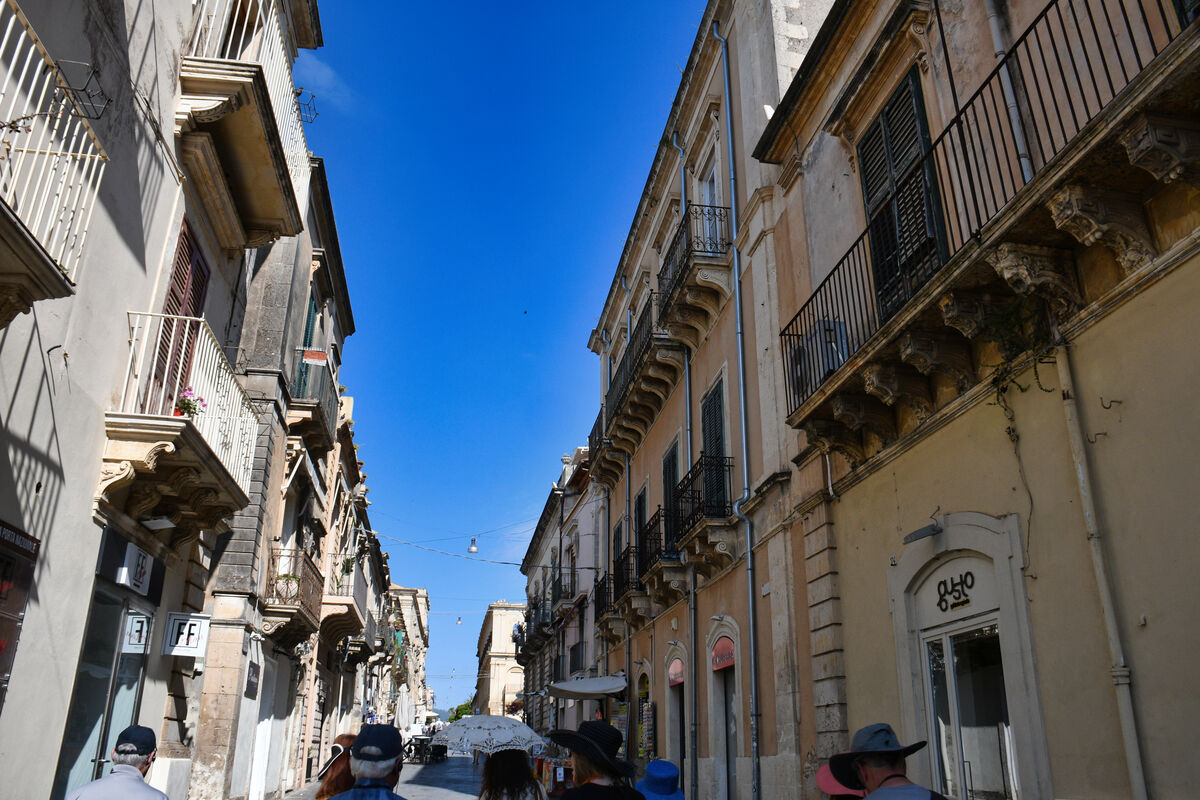
(Download)
I love the narrow side streets and alleys
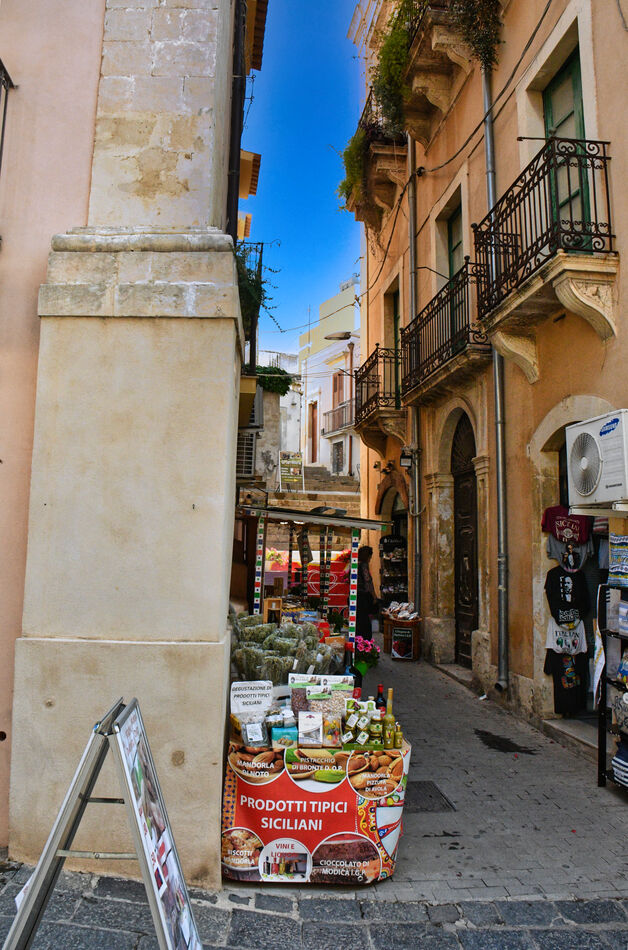
(Download)
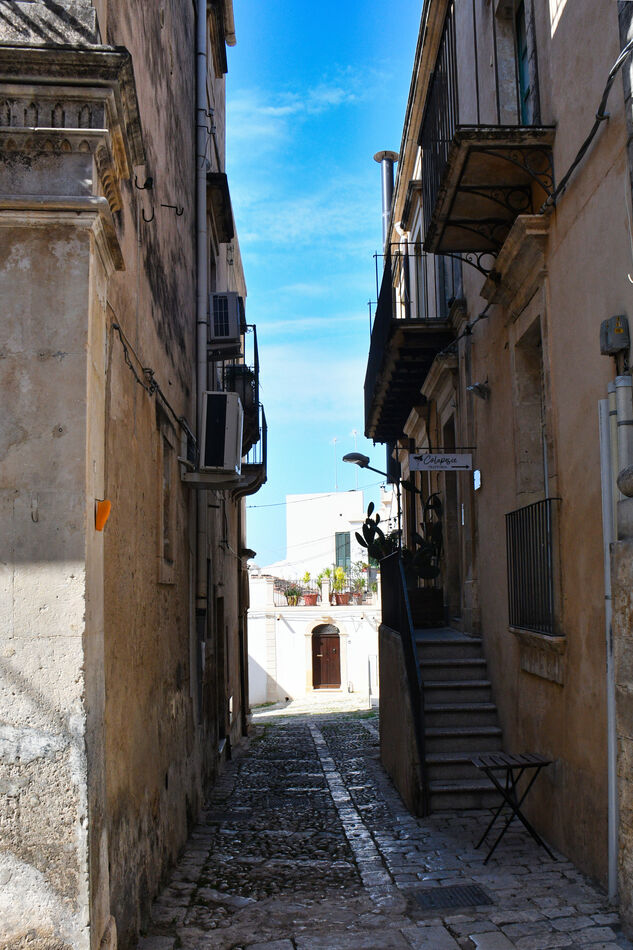
(Download)
Piazza Immacolata Pizza Place with the Church of San Francesco all’Immacolata in the background.
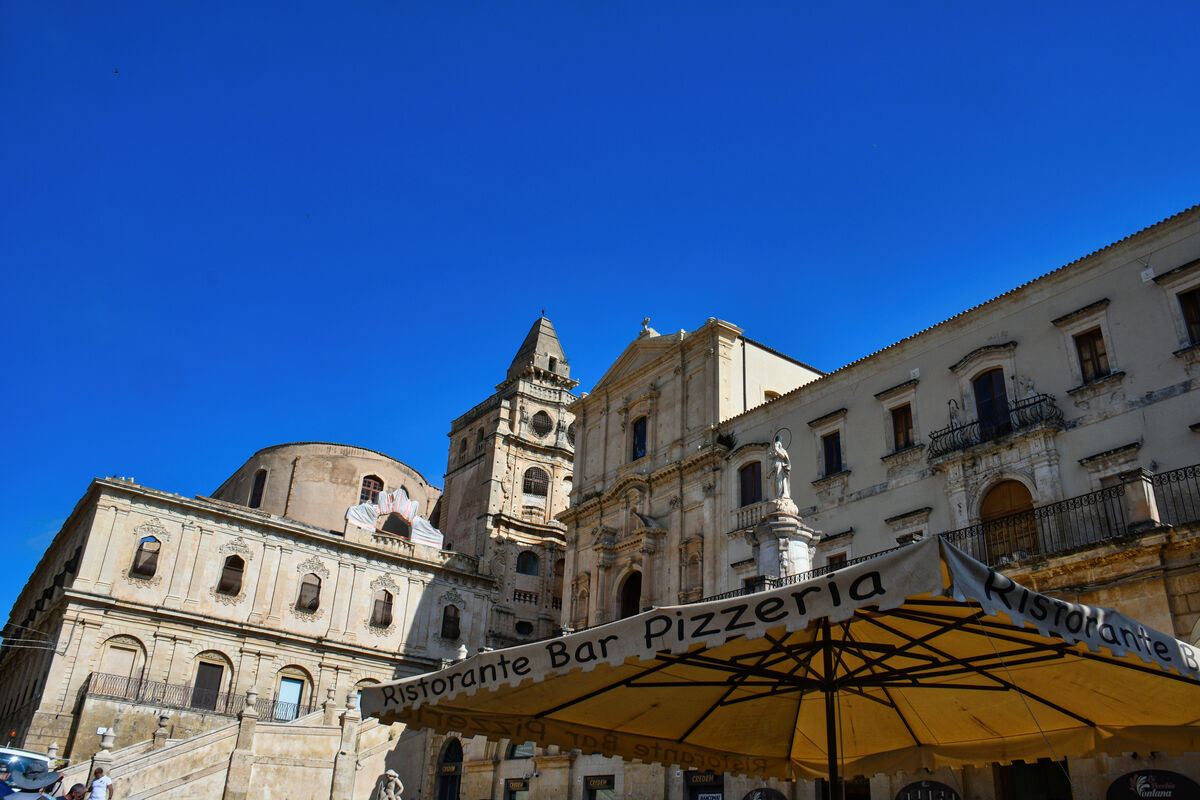
(Download)
The Piazza without the Pizza!
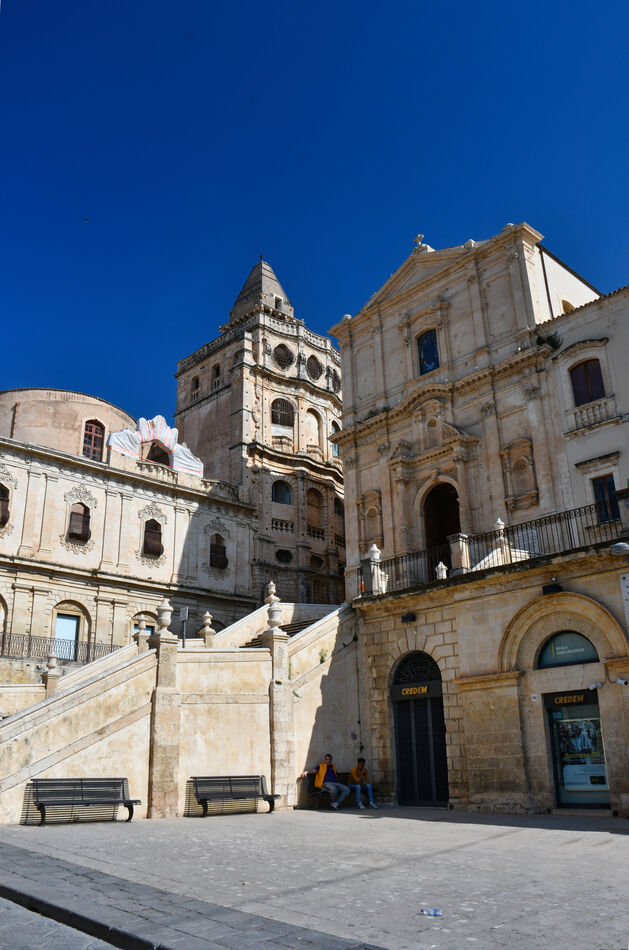
(Download)
Mar 22, 2024 14:11:44 #
Mar 22, 2024 14:39:47 #
Mar 22, 2024 15:11:34 #
srfmhg wrote:
After leaving the bus we took a quick walk through... (show quote)
Great set Mark!
Number 3 is an easy one. You know what they say: How do you get an Italian to stop talking? Handcuff him.
Mar 22, 2024 15:22:54 #
Mar 22, 2024 15:23:40 #
DJphoto wrote:
Great set Mark!
Number 3 is an easy one. You know what they say: How do you get an Italian to stop talking? Handcuff him.
Number 3 is an easy one. You know what they say: How do you get an Italian to stop talking? Handcuff him.
Thanks very much Dennis. Exactly my thoughts when I saw them.
Mar 22, 2024 15:58:55 #
srfmhg wrote:
After leaving the bus we took a quick walk through... (show quote)
A great post loaded with gorgeous examples of utter photographic magnificence 🩵💙💎💙🩵
Mar 22, 2024 16:32:00 #
Mar 22, 2024 17:54:54 #
Mar 22, 2024 20:34:58 #
joecichjr wrote:
A great post loaded with gorgeous examples of utter photographic magnificence 🩵💙💎💙🩵
Thanks so much Joe. I'm always humbled by your superlatives!
Mar 22, 2024 20:35:21 #
Mar 22, 2024 20:35:51 #
UTMike wrote:
More of your wonderful tour with a great start, Mark.
Thank you so much Mike. Many more to come!
Mar 23, 2024 08:34:22 #
Mar 23, 2024 09:25:38 #
tcthome
Loc: NJ
Another nice set & yes, those narrow streets and alleys show lots of character of the community's they are in.
Mar 23, 2024 09:27:12 #
Wonderful set, Mark. I love your walking tour photos, they bring back memories of my visits to Sicily. Loved seeing Gail in front of the pasticceria. Beautifully done.
If you want to reply, then register here. Registration is free and your account is created instantly, so you can post right away.

